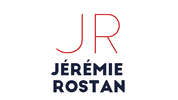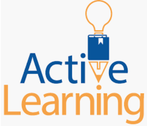|
Modern educators know from scientific research as well as from the careful analysis of their own local data that active learning is effective teaching: students learn best when they are involved in the construction of knowledge and discover it for themselves through reflective practice.
However, students themselves are not necessarily aware of this fact. Not only do they often prefer “top-down” instruction: they also tend to feel like they are learning more from traditional teaching methods. The reason, a new study proposes, is that active engagement has students do most of the cognitive lift. On the one hand, this is exactly what makes a student-centered approach more effective; but, on the other hand, this also what makes it feel less effective. In students’ unconscious mind, the very cognitive effort that makes them learn is misinterpreted a sign that they are struggling to. To test this theory, the team of researchers compared students’ actual learning and self-reported perception of learning during two introductory Physics classes in college. About 150 participants were randomly assigned to two classes covering the exact same content and even using the same handouts
Based on standardized tests, students in the “active instruction” group learned more. However, based on standardized surveys, their perception of learning (while positive) was lower than that of their peers in the “passive instruction” group. As explained by the researchers, “Students who are unfamiliar with intense active learning in the college classroom may not appreciate that the increased cognitive struggle accompanying active learning is actually a sign that the learning is effective.” This is not only a cautionary tale about a potential limitation of the use of student surveys in the assessment of teachers. This misinterpretation may also have detrimental effects on student motivation and engagement--which in turn risks making active learning less effective, because this decentralized approach depends heavily on these two factors for its success. As a consequence, the researchers make two recommendations in their article that should help make active learning work:
Reference: Deslauriers, McCarty, Miller, Callaghan and Kestin (2019), “Measuring actual learning versus feeling of learning in response to being actively engaged in the classroom,” Proceedings of the National Academy of Sciences
0 Comments
Your comment will be posted after it is approved.
Leave a Reply. |
|
Proudly powered by Weebly

